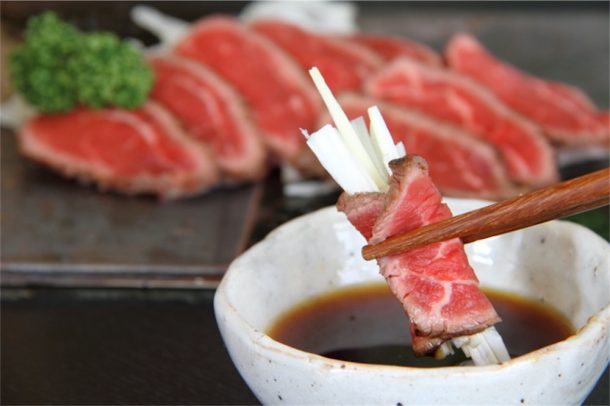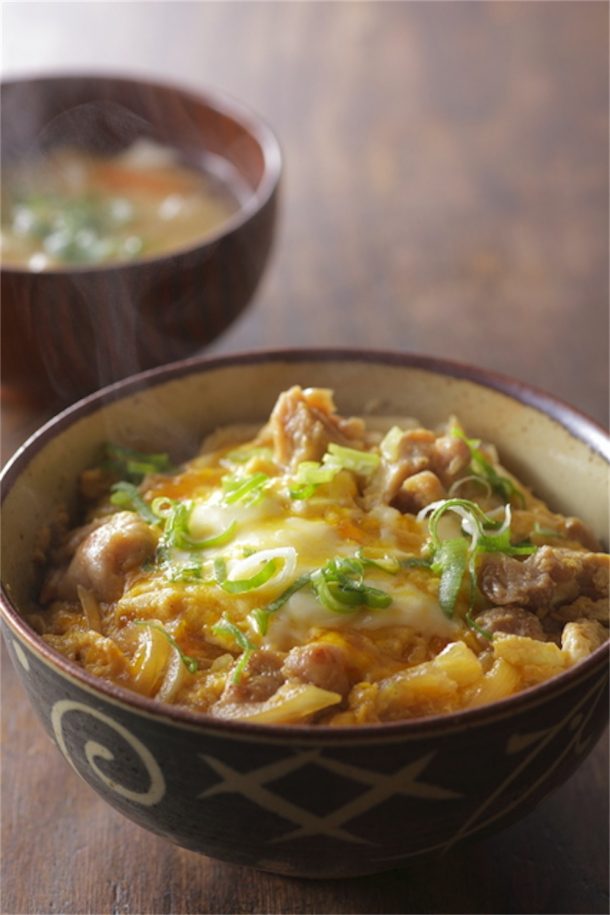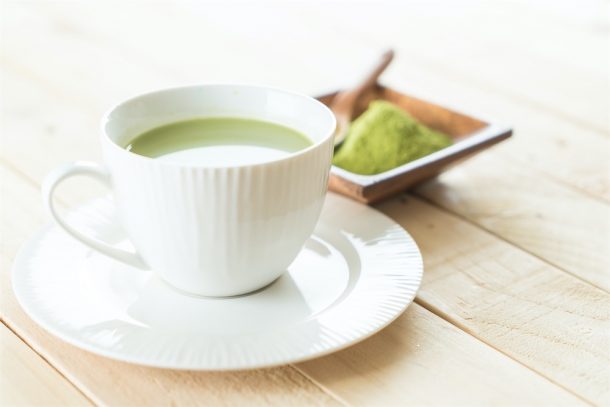In today’s ‘Dinner and a Movie at Home’, take this opportunity to watch some of the films that have made kimono their star while enjoying a recipe from Japan Centre for an evening inspired by the breath-taking Kimono: Kyoto to Catwalk.
Exhibition curator and Keeper of the Asia Department, Anna Jackson writes:
Our image of the kimono is often mediated through film. The world of feudal Japan, where everyone wore kimono, is most potently presented through the seminal films of Akira Kurosawa. Costumes such as the black kimono and hakama (pleated lower garment) worn by Toshirō Mifune in Sanjūrō, which is in the V&A collection, did much to shape the prevalent image of the samurai as a noble yet modest warrior. Japanese cinema has also produced formidable heroines, most notably Meiko Kaji as Yuki Kashima the leading character of Toshiya Fujita’s chic, yet brutal, action film Lady Snowblood. The film shocks through the juxtaposition of Kaji’s elegant, kimono-clad character and her blood-spattered confrontations. Lady Snowblood provided the blueprint for Quentin Tarentino’s Kill Bill.
Hollywood gives us a rather more romantic, stereotypical image, in Memoirs of a Geisha adopted from Arthur Golden’s best-selling book. Kimono are central to the film, which garnered costume designer Colleen Atwood an Academy Award. Her clever use of colour, pattern and styling clearly distinguishes the characters and creates complex yet harmonious compositions when they appear in frame together. The rivalry between the heroine Sayuri and Hatsumomo, a celebrated but spiteful geisha, is beautifully conveyed through costume. Sayuri wears kimono in pastel colours, neat and demure, while Hatsumomo’s red and black kimono are styled loosely, symbolic of her passionate yet tempestuous character. The film fostered the global interest in kimono and reinforced the vision of the geisha as the ultimate symbol of Japan.
Toshirō Mifune’s Sanjūrō costume, pieces designed by Colleen Atwood for Memoirs of a Geisha and a host of stunning kimono and kimono-inspired garments that have graced everywhere from catwalk to street to screen are waiting to be discovered in Kimono: Kyoto to Catwalk when the museum reopens. Until then, enjoy a Kurosawa cinematic masterpiece or lose yourself in Arthur Golden’s epic romance while tucking into one of these indulgent recipes from exhibition supporters Japan Centre.
- Search ‘Akira Kurosawa’ on Amazon Prime for access to a range of classic titles
- Stream Lady Snowblood on Amazon or YouTube Movies
- Stream Memoirs of a Geisha on Amazon or YouTube Movies

Starter – Beef Tataki
Beef tataki refers to a Japanese method of preparing fillet beef, where the meat is lightly seared, marinated, sliced thinly similar to sashimi, and served with a citrus-soy dipping sauce. This easy and delicious recipe provides step-by-step instructions for making the perfect beef tataki. Serve on its own or with a bed of Asian salad leaves such as shiso and mizuna.
Serves 3
Ingredients
/
Marinade
30ml soy sauce
45ml cooking sake
30ml mirin
1 spring onion, sliced
2 garlic cloves, finely sliced
Beef fillet
300g fillet beef
Pinch of salt and pepper
Sesame oil
Dipping sauce
30ml ponzu citrus seasoned soy sauce
Method
To make the marinade add the soy sauce, cooking sake and mirin to a small bowl and stir. Transfer the marinade mixture to a pan and bring to a gentle simmer for a few minutes before adding the chopped spring onion and garlic, set aside to cool (your spring onion and garlic are to remain quite raw).
Season your fillet beef with salt and pepper and leave it to rest for about 10 minutes at room temperature. Grab a medium-sized frying pan, add a splash of sesame oil and on medium heat evenly sear your beef for one minute on each side, it should be rare on the inside.
Let it rest on a chopping board for 5 minutes then slice your fillet very finely and lay on a long plate. Pour the marinade sauce over the beef and serve with a small dipping bowl of ponzu soy sauce. You can also cover and leave it to chill in the fridge if you want to serve it cold with a higher marinade infusion.
Tips
An alternative way of marinating the meat is to wrap in a sandwich bag together with the marinade (after searing and before slicing) in the fridge for two hours.

Main – Oyakodon chicken and egg rice bowl
Enjoy one of Japan’s most popular and easy-to-make fast food dishes in the comfort of your own home. Oyakodon is a one-bowl meal consisting of a bed of rice topped with chicken and egg (hence the name ‘oyako’, meaning ‘parent and child’) and seasoned with soy sauce, mirin, and dashi. A guaranteed mealtime favourite, we recommend you serve this as soon as you finish making it.
Serves 2–3
Ingredients
200g chicken thighs/breasts
1 onion
150ml dashi stock
1 tbsp soy sauce
1 tbsp mirin
pinch of sugar
2 eggs
500g cooked rice
1 spring onion
Method
We need to prepare the chicken first so cut up your chicken into small bite-size pieces. Japanese people tend to use chicken thighs rather than breast meat for the extra flavour, but both will work fine.
Add the dashi stock to your oyakodon pan or frying pan and heat before adding the mirin and soy sauce plus a pinch of sugar. Bring to the boil and then simmer on medium heat. Now is also a good time to start cooking your rice separately so that it is ready for when you finish cooking the dish.
Once the soup has been simmering for a few minutes, add your pieces of chicken and cook. Once the chicken is done, about 10–12 minutes, chop up a whole onion into thin slices and add them to the pan.
Beat your eggs in a bowl, then pour into the pan and let it cook for a few minutes. Try not to let the egg cook too much, about 1–2 minutes, a slightly runny texture is the preferred way to serve oyakodon.
When the eggs are done, turn off the heat and pour the egg and chicken over a bowl of freshly boiled white rice. Garnish with some finely sliced spring onions before serving, enjoy.
Tips
Add a few other ingredients into the mix if you want more flavour. We suggest adding shiitake mushrooms, green beans, or edamame when you add the onion. You can also top the dish with some shredded nori as a nice finishing touch.

Dessert – Matcha green tea latte (hot or iced)
This fast and easy recipe compliments and offsets the fragrant, leafy taste of matcha green tea powder with creamy milk and a little sugar for a flavour balance that will leave you feeling ready and raring to go. Delicious hot or cold.
Serves 1
Ingredients
1 tsp matcha green tea powder
2 tsp sugar
3 tbsp warm water
250ml cold milk or 300ml hot milk
Method
Spoon the matcha green tea powder and the sugar into a mug or cup.
Add the warm water and mix with a spoon or with a whisk until it is a smooth dark green paste to ensure no lumps form.
Warm the milk in a small saucepan and pour into the mug until nearly full. Use cold milk for an iced latte.
Use a whisk to mix the paste and milk together until smooth and light green in colour.
If you so wish, you can add a few sprinkles of matcha green tea powder on the top for decoration. Or add ice for an extra cold iced latte.
Visit Japan Centre for more recipes and to shop for your Japanese speciality ingredients, instore or online.


